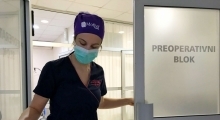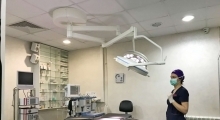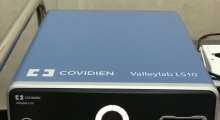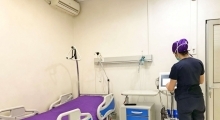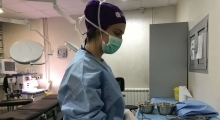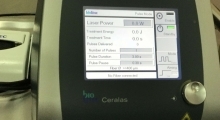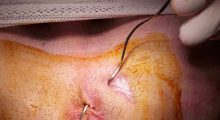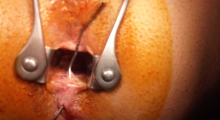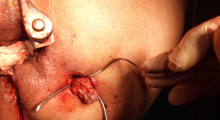Fistulas
What is anal fistula and treatment?
What is anal fistula?
Fistula is an abnormal communication between the anus and the skin. On the surface of the skin around anus can be one or more visible holes. This hole is a narrow tunnel with its internal opening in the anal canal and its external opening in the skin near the anus. Anal fistulas commonly occur among people with a history of anal abscesses. They can form when anal abscesses were drained, but haven’t healed properly. Consequently, this leads to persistent or occasional leaking of pus, blood or mucus. Although this is not particularly painful, abscess can form again.
Treatment
• Fistulas are treated by surgical procedures.
• Perianal fistulas are not easy to treat.
Surgical procedure is often performed in stages, as this condition usually requires 2, 3, 4 or more operations.
Even after long treatment and a number of operations, we can’t guarantee fistulas will stop recurring.
The cause of fistulas is still unknown, so we can’t tell whether they will completely disappear besides all the taken health measures.
• Treating fistula can take such a long time, that secondary surgery can be necessary after just one week after the first operation, sometimes after a month or several years after the first surgery.
What are the alternative methods?
A small number of fistulas heal spontaneously, so surgical procedure is normally performed.
Alternative is not undergoing the surgery.
Benefits you can count on after the surgery
• To perform the surgery (usually in stages) , which will heal or help control the fistula with minimal side effects.
• To identify the nature of anal fistula.
During the procedure/operation
Surgical procedure on fistula can be simple or complex, depending on the nature of fistula.
Sometimes, it is not possible to see the whole fistula before the operation, and decision has to be made while you are under anesthesia. Simple fistulas can be opened by cutting a small portion of anal skin and muscles. Complex fistulas are deeper and require cutting too much of the muscle tissue. This can result in incontinence, so such a procedure is not an option. There are other forms of treatments for such cases, and your surgeon will discuss all of them with you.
Finding fistula tract
Locating the tract of a fistula is of the utmost importance in choosing the adequate treatment. This is usually done by introducing a probe through the external opening to the internal opening inside the anal canal. Sometimes, the tract is narrow or winding, so it’s difficult to determine it.
Opening the tract
Surface fistulas are best treated by cutting the skin directly above the inserted probe. This sometimes includes cutting a small portion of sphincter muscle, but the risk of significant change in continence is very low. This area then heals without any particular dressing. Degradable stitches are often put around the wound’s edges, to help healing.
Deeper fistulas
If the internal opening is located deeper inside, it is better not to cut the anal sphincter muscle, but consider alternative methods. The part of the tract which is not next to the muscle can be opened, but the surgeon may decide to place a seton. Seton is a type of surgical stitch or a rubber band that can be pulled through the skin opening, along the fistula, through the internal opening, and out through the anus. Then it is tied in a knot that can stay in the same place for several weeks or months. Many people find seton pretty comfortable- you can normally go to the toilet and wash yourself quite safely. Loose seton is normally used. It stimulates drainage of infected material and enables fistula tract to gradually heal around the seton leaving scar tissue. This is usually the first step of the treatment which includes several stages/ surgeries.
Secondary surgeries
Once the seton is placed, fistula is usually under control, but it won’t be cured and it will still drain. After that, another surgery is necessary, and there are several options. The choice depends on the type of fistula, its cause, decision made by the patient and their surgeon. Some of the options are:
a) Removing the seton and hoping the fistula will close or drain minimal amounts.
b) Attempt to close the fistula with fibrin glue- although appealing, this method does not guarantee a success.
c) Using a seton which slowly tightens within several weeks, gradually cutting the muscle and allowing healing. This involves lower risk of continence change comparing to surgical incisions.
d) Pulling out the core of the fistula tract, and closing the opening with a part of rectum lining (mucosa slice)
e) Closing the fistula tract with a biological plug, called anal fistula’s plug.
f) LIFT procedure (the ligation of the intersphincteric fistula tract). This is a relatively new treatment, designed for fistulas that pass through both the internal and the external anal sphincter muscle. The space between these muscles is opened to discover the fistula tract, which resembles a cable. That tract is then cut and both fistula ends are stitched (tied).
None of these procedures guarantees to be successful at the first attempt, and normally several surgeries are necessary for fistula to heal. The advantage of these methods is a very low risk of incontinence (lack of control), because the anal muscle isn’t cut. Every new surgery involves expenses, and costs of every procedure separately.
Significant, unavoidable and frequent risks of fistula surgery
Anal fistula surgery is generally very safe operation with few risks but, as in case of any surgery, there are potential complications.
Maintaining anal continence is the most important issue when the type of procedure is to be chosen. With majority of patients, opening the fistula doesn’t include cutting a significant portion of anal muscles and continence is not endangered. However, every change on anal sphincter muscle can lead to certain change in ability to control gases, liquids, and occasionally solid stool from the back passage.
Incontinence-lack of control
Continence-control
Perianal fistulas
FiLaC (Fistula Tract Laser Closure) is a minimally invasive method for treating perianal fistulas. It involves a radial laser, which instantly eliminates and closes (seals) the fistula tract.

Gallery
Monday-Friday from 09-20h
Saturday from 09-15h
Opšta Bolnica Analife
Skadarska 5
(Zemun), Beograd




